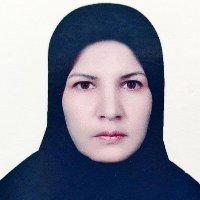The Relationship between Magic Elements and Archetype in Iranian Folklore Fictions
Author(s):
Abstract:
Folklore Fictions such as mystery and legends contain magical elements which have been considered since further past years among people. Whereas the metaphysical beliefs provide the psyche calm, they have approved their places despite of scientific progress. Folklore Fictions are one of the most popular features of folkloric culture which has provided the suitable bed for the collective consciousness of a nation. This study approaches two layers including; deep-structure and surface structure of fiction simultaneously. The different forms of magic appear in the surface structure, while the deep structure refers to the critical method of archetype. The findings show that 89% of magical elements appear in the fictions containing the archetype of heros journey. Such fictions overlap with the archetypal elements .There are either white or black magic due to archetypal heroes in such fictions, their connections are as if that shadow or the black magic make conflict for the hero and the archetype of old wisdom or white magic guide the hero, in order to remove problems. Their functions are diabolical. The different forms of magic make the elements of fiction which are respectively frequent like: the magical objects, the natural elements, the human personality, the imaginative elements and creatures, the semi-human creatures, the surrounding elements of human, the pseudo-animals, semi-animals, and Satan.
Keywords:
Magic , Archetype , Old Wisdom , Shadow , Iranian Fiction
Language:
Persian
Published:
Culture and Folk Literature, Volume:4 Issue: 11, 2016
Pages:
79 to 107
https://magiran.com/p1617414
مقالات دیگری از این نویسنده (گان)
-
Analysis of Persian Stories Title (1332-1357 AH) with a Sociological Approach
Sanaz Khoshhesab *, Moosa Parnian,
Journal of Literary Interdisciplinary Research, -
Comparative analysis of chaos and order in the novels of the Chah-e Babel and Vaha0e Ghoroub s based on the Lutman cultural semiotics model
Khalil Baygzade *, Parisa Ahmadi, Sosan Jabri, Abdoireza Naderifar
Journal of Literary Interdisciplinary Research,


